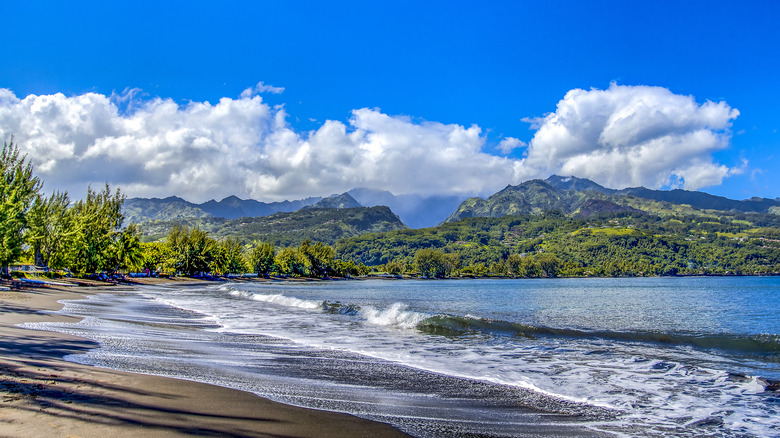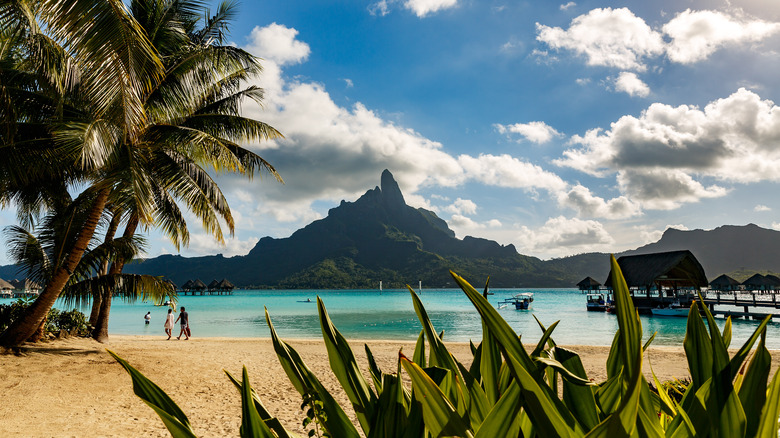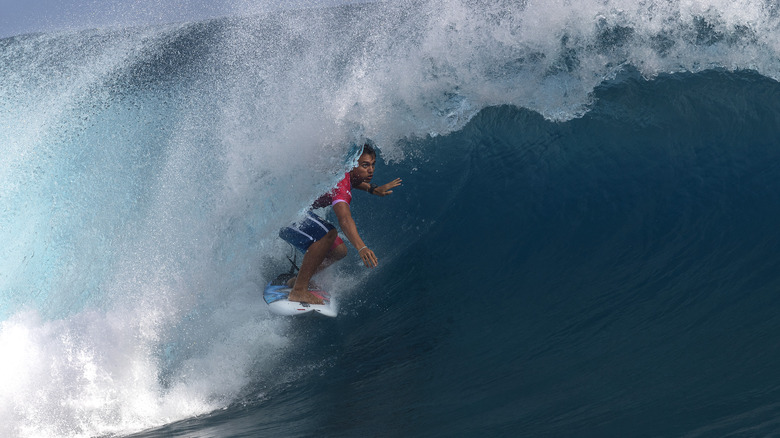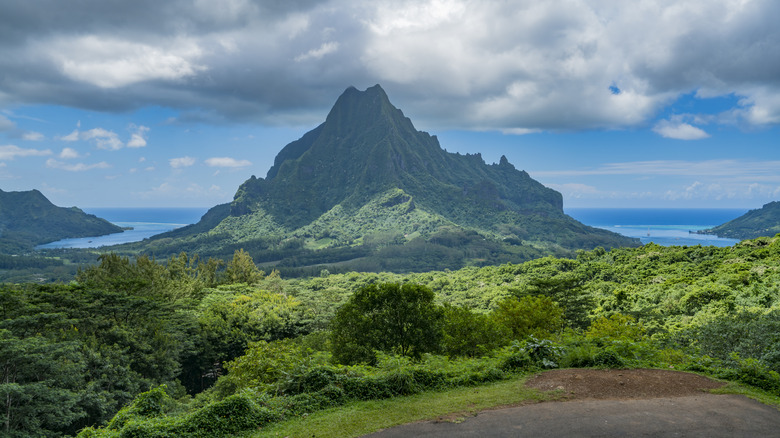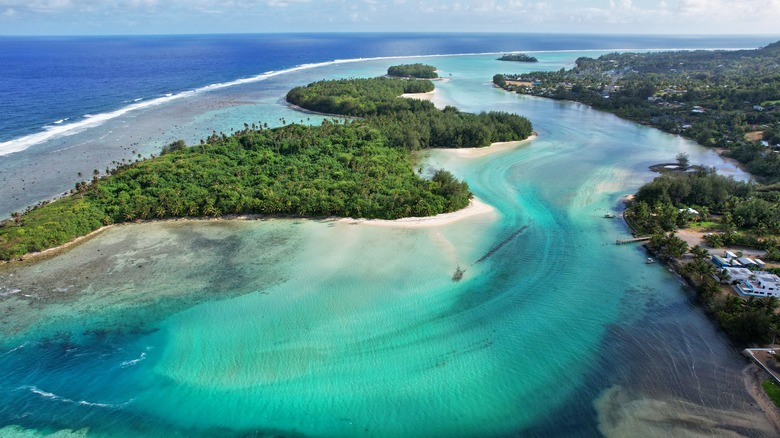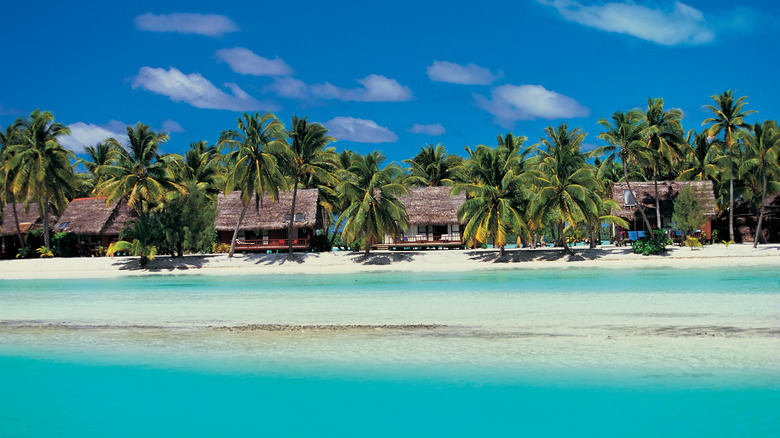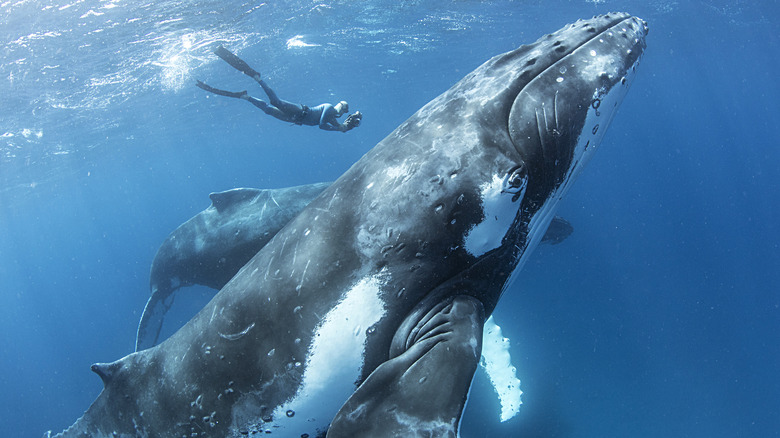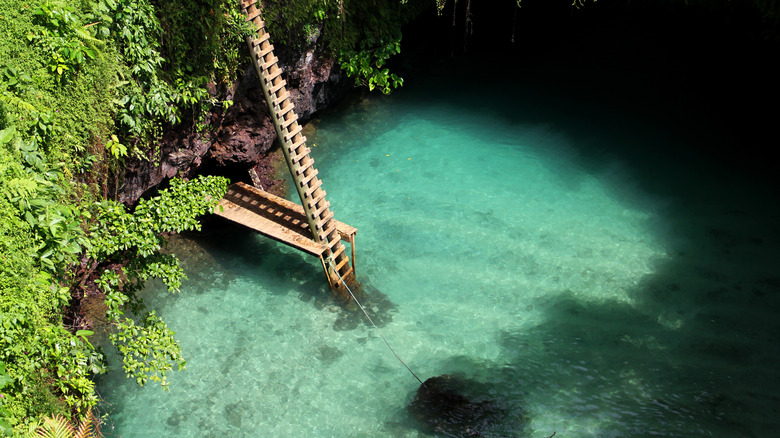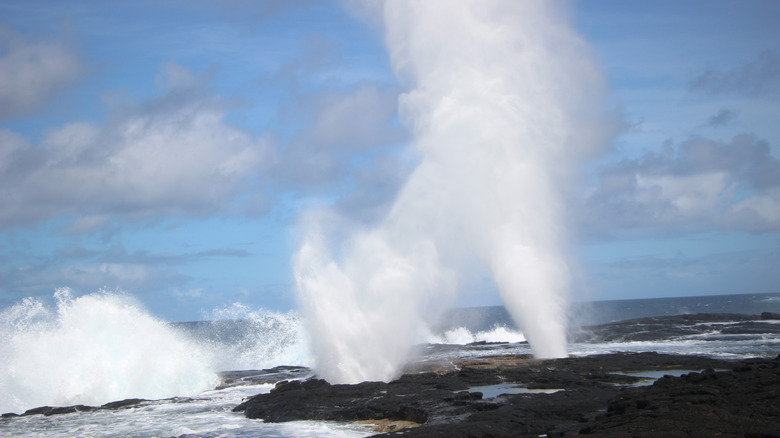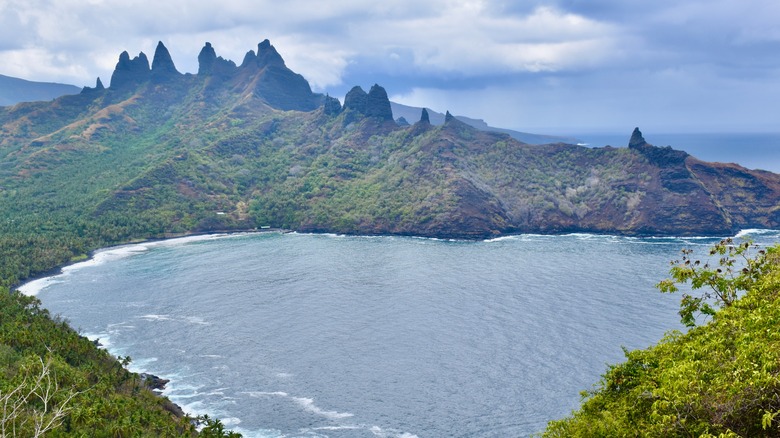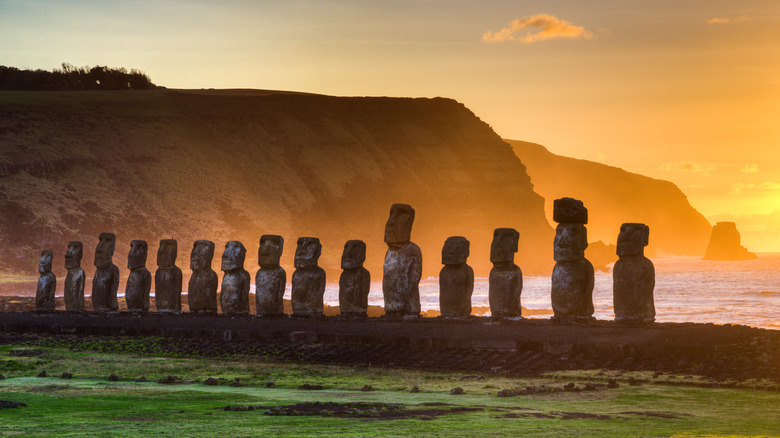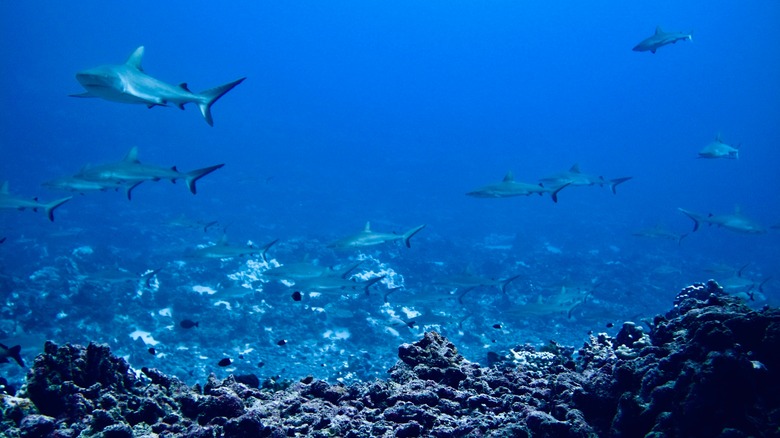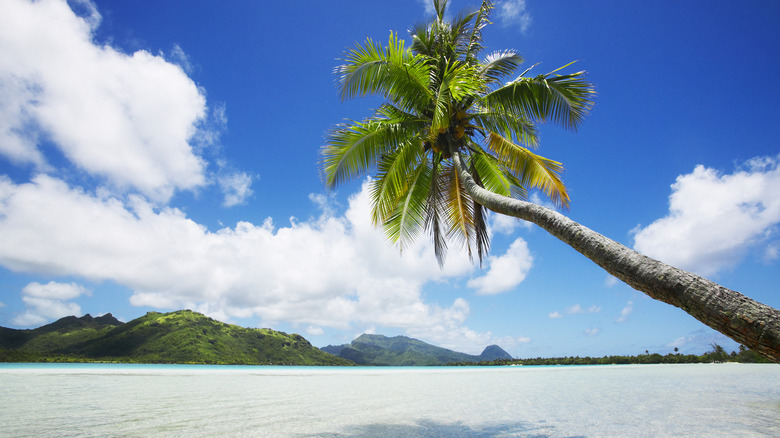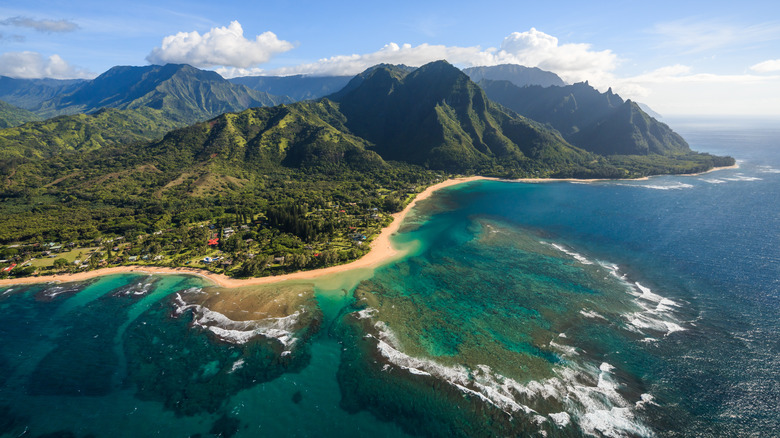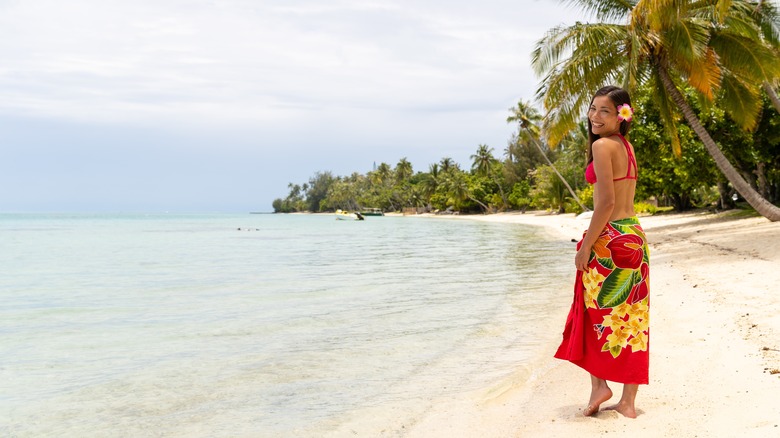These Beautiful Polynesian Islands Are The Perfect Addition To Your Bucket List, According To Travelers
One thing that grabs you when visiting any Polynesian island is its other-worldly beauty. The remote locations of the islands mean they are far from the world of factories, trucks, and buses, and their natural beauty has remained intact since the dawn of time. Polynesia has everything a nature lover can dream of, from prehistoric landscapes to neon underwater seascapes. This makes it a bucket-list destination for many. However, their remote locations and high prices mean they are not the most accessible for everyone. But for the few who make the trip to the region, these islands deliver timeless memories of color and culture.
Polynesia is a vast group of islands spread throughout the Pacific Ocean. It's divided into West and East Polynesian cultures and has a long history that predates European exploration and Western colonization. Today, Polynesia includes independent nations such as Samoa and the largest in the region, New Zealand. Additionally, American Samoa is a territory administered by the United States, and other political units like Hawaii and special territories like Rapa Nui are also part of Polynesia. There are so many to choose from, and just about every one of the thousands or so that exist could easily deliver a bucket-list memory. But here is a small taster of some that might be the perfect addition to your list.
Bora Bora, French Polynesia
Almost slap-bang in the center of the Pacific Ocean is Bora Bora, French Polynesia's premier destination. The island is a picture-perfect honeymoon spot and one where you may even catch sight of a famous person, as it's a popular celebrity hotspot. As you fly in, you'll notice a stunning aquamarine lagoon encircling the whole island. Inland, you'll see two mighty volcanic peaks, the tallest of which is Mount Otemanu, one of the most recognizable natural wonders of French Polynesia.
Despite the island's languid nature, it's a hive for outdoor adventurers. From snorkeling in the coral gardens of Motu Fanfan to hiking the Valley of the Kings, where you can explore old ruins of Polynesian temples and villages, you'll never be short of a daytime activity or two. While the island focuses on luxury resorts, including some stunning overwater bungalows, it is possible to travel there without spending a fortune. There are guesthouses and even a hostel or two that ensure those on a leaner budget can still enjoy the island's bucket-list attractions. However, they are still comparatively expensive compared to what a budget traveler would usually be prepared to spend, and you might need to book quite far in advance.
Tahiti, French Polynesia
The majestic island of Tahiti is the largest in French Polynesia and one that offers a plethora of bucket-list scenic spots and cultural experiences. With miles of uninhabited coastline and world-class surfing, it's also an excellent choice for outdoor adventurers. You can experience the island's untamed natural beauty at its southeastern end, an area known as Te Pari. Here, you'll find lonely bays, steep jungle trails, lush green valleys, and volcanic rock faces taking a battering from the ocean. Venture west to Teahupo'o, and you'll discover some of the best surf in the world at Havae Pass. In fact, this small, remote village was the setting for the 2024 Paris Olympic surfing competition, the farthest from any host city where an Olympic event has been staged since 1956.
However, it's not only about the extremes. The northern part of the island is where you'll find more accessible attractions and unique cultural experiences. A ring road encircles the entire area, and it's sealed and in reasonable condition. This convenience gives travelers access to many of the island's iconic spots, including flower plantations, perfumeries, and Plage Vaiava, the island's best white-sand beach and home to some incredible snorkeling.
Moorea, French Polynesia
The sublime French Polynesian island of Moorea is just a short catamaran trip from Papeete on the island of Tahiti. The island is known as a haven for bucket-list adventurers seeking unique underwater experiences, boundless outdoor activities, and stunning viewpoints. Moorea is, quite frankly, another Pacific island dream. The northwestern coast has bountiful neon reefs for avid scuba divers, and beyond the coral, you can find blacktip reefs and lemon sharks. Just a little further clockwise around the coast, you'll discover Opunohu Bay, where you may even get a chance encounter with the mighty humpback whale.
Like Tahiti, a ring road also encircles Moorea. This amenity allows for thorough exploration by car, bicycle, or scooter. If you're feeling a bit more spirited, the intrepid can hike the tropical highlands of the island's interior and encounter unique flora and fauna, as well as surreal views of the island's jagged volcanic peaks. The Three Coconuts Pass (Les Trois Cocotiers) is the top hiking trail in Moorea, offering a challenging yet rewarding experience.
Rarotonga, Cook Islands
The island of Rarotonga is the most populated of the Cook Islands. It's surrounded by incredible blue water and offers underwater seascapes of color and life comparable to an "Avatar" movie. With its technicolor coral forests and an abundance of vibrant sea life, Rarotonga is a scuba diver and snorkeler's paradise. But the island isn't only about its submarine life. On land, you'll find a bounty of natural treasures to discover.
Among these is Te Rua Manga, also known as The Needle. This striking peak is a prominent rock formation that you can hike to on the Cross Island Trek, a challenging 4.7-mile hike with an elevation gain of around 2,800 feet. At the top, the peak rewards exhausted hikers with astonishing 360-degree views of the island. Curious travelers are also well-catered for in Rarotonga — it's an important island on which to explore Maori culture. Visitors can learn all about their migrations to New Zealand and visit Avana Point, where they set off in their canoes hundreds of years ago.
Aitutaki, Cook Islands
Captain William Bligh of the HMS Bounty famously visited Aitutaki, a tiny volcanic island that is part of the Cook Islands, just before the notorious mutiny event of 1789. However, the island is primarily renowned for its stunning turquoise inner lagoon fringed by dramatic white sand beaches and dotted with uninhabited islets. The lagoon teems with marine life and is a remarkable destination for nature lovers. Visitors can enter by boat via the western side of the island. You'll be treated to a traditional greeting of Polynesian drums and dance by the friendly locals who are proud of their rich customs and practices.
Once on the island, check into Aitutaki Village, which has a three-night minimum stay. You can tackle one bucket list entry by visiting the deserted islets for some Robison Crusoe-style seclusion. But to get a real feel of the uniqueness of the place, you can also take a short hike to the top of Maungapu, the highest point on the island at 407 feet. Here, you'll witness resplendent views of the atoll and its aquamarine lagoon.
Tongatapu, Tonga
Whale-watching is one entry that is often on more adventurous bucket lists. But what about swimming with whales? There are very few places in the world where this is permitted, but adventurers heading to the Polynesian islands can check this one off in the Kingdom of Tonga between July and October every year. Tongatapu is the main island of this South Pacific archipelago and the jumping-off point for most adventures. It's a stunning island with unique cultural and geological features.
On top of the opportunity to swim with gentle humpback whales, visitors can also marvel at the Mapu'a 'a Vaea. In English, they are known as the Whistle of the Noble, a stretch of rocks 3 miles long peppered with blowholes. On days when the swell is strong, you can witness hundreds of these blowholes randomly spurting seawater as high as 98 feet into the air. You can also visit Ha'amonga 'a Maui, the island's answer to a mini Stonehenge and one of the region's most intriguing monuments.
Upolu, Samoa
If your bucket list includes visiting where you can get away from it all, staying on the unspoiled island of Upolu in Samoa is necessary. Fewer tourists venture to this part of Polynesia, which means lower prices and, more importantly, an authentic experience. However, with word leaking out, Samoa could be South Pacific's next "it" destination, so you may want to check your bucket list before everyone else decides to visit.
This pristine paradise is home to some incredible natural wonders, including the To Sua Ocean Trench, otherwise known as the Giant Swimming Hole. You'll need to hike through a humid jungle and descend a steep ladder (or fearlessly jump) to get to this 100-foot-deep cyan-colored pool. But once in the tranquil water, it will likely be a swimming experience you'll never forget — a true bucket-list moment. You can also hike in O le Pupu-Pu'e, South Pacific's first national park, where you'll find caves to explore and waterfalls to cool off in. The island also serves up a variety of wave sizes, meaning anyone from seasoned pros to absolute beginners can enjoy the thrill of surfing.
Savai'i, Samoa
Just a short ferry ride across the Apolima Strait from Upolo is Savai'i, the largest island in Samoa. This cultural gem is one of the best-kept secrets in the Pacific and is known for its rugged beauty, volcanic landscapes, and relaxed pace of life. It features plenty of natural wonders and several activities to keep even the most enthusiastic of visitors busy.
The island is home to a number of stunning waterfalls, including Mu Pagoa, a pleasant picnic spot, and Afu Aau, an idyllic swimming hole where the water drops from high up in the jungle down into the cyan-colored pool. The Alofaaga Blowholes are another natural phenomenon you can't miss. These lava tubes spectacularly shoot ocean water high into the air for a thrilling display of nature's power. Biking and surfing are two of the best activities on the island if you want to expend a bit of energy. On top of leisurely cycling around the island, travelers can enjoy more challenging mountain bike paths, while, like Upolu, a variety of swell sizes make it another good surf choice for all levels of experience.
Finally, a trip to Savai'i wouldn't be complete without visiting the Sale'aula Lava Fields. This fascinating area is the result of a volcanic eruption between 1905 and 1911, which not only destroyed an entire village but also extended the size of the island. Visitors will find half-buried buildings, a graveyard, and imprints of relics long since consumed by the lava flow.
Nuku Hiva, French Polynesia
Nuka Hiva is the second largest French Polynesian island after Tahiti, and its combination of culture and nature makes it a must-visit for bucket-list travelers heading to the area. The mind-boggling scenery is lush and rugged and offers an abundance of waterfalls and hiking opportunities that anyone who makes a trip to this isolated part of the world will never forget. A journey to the Hakaui Valley, for example, offers majestic cascades, like the Vaipo Waterfall, which stands as high as 1,148 feet, while the black-sand beach at Taioha'e Bay offers a glimpse into local life, as well as the stunning blue ocean.
Marine activities are plentiful here, too. Scuba divers can experience melon-headed whales and hammerhead sharks, while the humpbacks arrive in July and stay until November. You can rent a kayak to explore and even fish for your supper. When it's time to venture inland, you can enjoy the island's vibrant culture and friendly locals on horseback. There are archaeological sites and traditional ceremonies waiting for your enjoyment on the magical island of Nuku Hiva.
Rapa Nui (Easter Island), Chile
Getting to the remote island of Rapa Nui is done via Santiago, the capital city of Chile, which is just one of the travel logistics visitors need to know. It's the enigmatic moai statues that travelers primarily come to see on Rapa Nui, or Easter Island as it's known. These giant head-and-torso figures are randomly arranged throughout the entire island and are one of Polynesia's main tourist draws. With giant faces and earnest expressions, the moai can reach as high as 72 feet and weigh as much as 250 tons. That is, at least, the specifications of Te Tokanga, or The Giant, the largest moai ever attempted. The other statues, of which there are around 1,000, are of various heights and weights.
Most visitors to the island tour the Rano Raraku quarry, where the sculptors sourced the stone to make these colossal statues. Hiking here offers the most stunning views and an abundance of moai to discover. However, there are more attractions to enjoy than just these monuments of honor to ancient chieftains. You can find gorgeous white sand and turquoise-blue water at Playa de Anakena, or you can go turtle spotting at Hanga Roa harbor. Divers, snorkelers, and surfers are also well-catered for on the island, and this ensures that there's plenty to do should you manage to see every moai in the park.
Fakarava, French Polynesia
Fakarava is a UNESCO Biosphere Reserve known globally for its stunning coral reefs and diverse marine life. It's the second-largest atoll in the Tuamotu Archipelago, with a stretch of 37 miles of motus forming a rectangular shape encircling a huge inner lagoon, six times larger than Washington DC. Diving is one of the prominent activities here. There's an abundance of reef sharks, which are spiritually connected to the area. Locals have a deep respect for these animals, which has contributed to dramatic conservation efforts and resulted in excellent diving opportunities for tourists. The stunning 984-foot-long coral reef known as Shark Wall has a worldwide reputation as one of the best places to see these majestic creatures.
Cycling is another popular activity on the atoll. There are regular push bikes, mountain bikes, and, if you're feeling less energetic, e-bikes available for rent. Exploring the limited yet scenic roads with their lack of vehicles is an excellent day out. A cycle to the picturesque Blue Lagoon, with its palm trees and white sand beaches, is a fantastic way for travelers to get a deeper appreciation of the island's natural beauty and tranquility.
Huahine, French Polynesia
Huahine is one of the lesser-known islands in French Polynesia and one that has earned the nickname "Garden of Eden." Technically, it is two islands, Huahine-Nui and Huahine-Iti, but its connection by bridge and proximity to each other makes it feel like one big, happy island. It's celebrated for its pristine natural beauty and is thought of as a serene escape from the more frequented spots of Tahiti and Moorea.
With lush flower gardens and sprawling fields of spice and fruit, travelers can immerse themselves in tropical beauty. For fine white sand and crystal-clear waters surrounded by picturesque mountains, you can visit Fare Beach. It's an excellent spot for surfers and snorkelers and offers sublime views of Raiatea and Taha'a islands. Hikers and culture lovers will no doubt love the trek up Matairea Hill, where they can find ancient ruins of historical significance at the top that complement the panoramic views nicely. Other important sites include Marae of Maeva, a sacred ceremonial site north of the island, and Marae Mununu, another large ceremonial site standing on the motu near Maeva. For a unique animal encounter, you can make your way to Faie and seek out the sacred blue-eyed eels that inhabit a stream near the village.
Kauai, Hawaii
Like just about every island in Polynesia, Kauai offers an abundance of activities. While it has snorkeling and hiking to rival any other in the region, it also provides some unique adventures you won't necessarily find on other Polynesian islands. One unique activity on the so-called Garden Isle is the three-hour tubing adventure that begins at the former sugar cane plantation in Lihue. Originally the plantation's irrigation system, you can drift through hand-dug tunnels and flumes while marveling at the stunning views. The minimum age for taking part is just five years old, meaning it's not intense and is simply a grand day out for the whole family.
However, it is a great destination for scuba and hiking, too. Some 18 miles off the coast, you can dive into the depths around Ni'ihau, where you can spot pods of Hawaiian monk seals in their natural habitat. Their graceful swimming and playful personalities may well be the highlight of your trip, and you can also learn about the ongoing conservation efforts to protect this endangered species. Hikers are also well-catered to. Among its many scenic routes is the challenging Awa'awapuhi Trail. You'll witness the island's breathtaking views of dramatic landscapes and vibrant colors.
If you're not feeling so energetic, the Waipo'o Falls trail is easier, takes under two hours, and ends with a refreshing dip at the epic multi-tiered waterfall. An even more accessible but every bit as dramatic trek is the paved trail to Waimea Falls. You walk through botanical gardens and explore cultural sites on the way, all the while marveling at the Waimea Canyon, otherwise known as "The Grand Canyon of the Pacific."
Methodology
The word Polynesia is derived from the Greek word for "many islands." And this couldn't be more true as there are over 1,000 of these islands split among 6 countries. We left New Zealand out when discussing this list, as it is a destination on its own, and most inhabitants do not identify as Polynesian. However, choosing a handful from so many options was a task and a half.
In the end, we selected from personal experience on the islands of Rapa Nui (Easter Island) and Rarotonga. We also consulted adventurers who have traveled frequently to several other Polynesian islands and ensured their recommendations were consistent with review scores on sites such as TripAdvisor and Google Maps.
